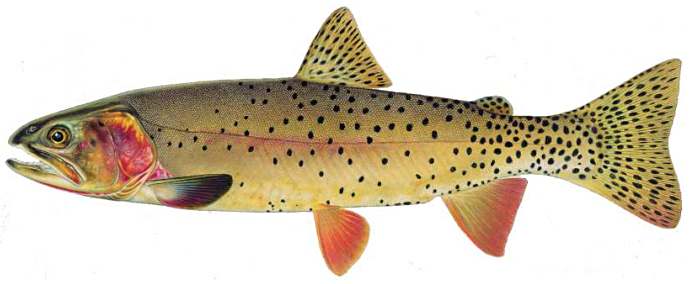TROUT BRAINS IN SPRING
We "See" What The Trout "See"
-------
 .. New research results have been released from the Montana State Piscatorial Institute, (MSPI) detailing the findings of trout vision.
.. New research results have been released from the Montana State Piscatorial Institute, (MSPI) detailing the findings of trout vision. .. The results had been delayed for about three years due to the problems of replicating the results from the implantation of micro sensors in the visual centers of the living trout brain.
.. The results had been delayed for about three years due to the problems of replicating the results from the implantation of micro sensors in the visual centers of the living trout brain... The micro sensors capture and record the images in the trout brain. Removal of these sensors is a delicate process, and frequently some data loss is incurred.
.. The tentative final results are scientifically astounding, and at the least, will change the way we fish.
.. The results pertain only to the trout brain during the Spring and early months of Summer. This is a time of discriminate subsurface feeding.
.. Trout have as their main brain component the optic lobes. These highly developed brain tissues are capable of a higher resolution than previously thought, and are also capable of providing the necessary stimulus/reaction response to a wide variety of external phenomena.
.. The single most astonishing finding is that the trout uses this highly developed cerebral mass for a process of transliteration. This transliteration is capable of transforming objects that are "seen" into objects that are "desired."
 .. The transliteration of visualized objects into desirable objects takes place at the interface of the cerebrum and the optic lobes. This is facilitated by neuro-synaptic activity that was also traced to both the hypothalamus and the olfactory interface. The resulting interplay of these electrochemical processes produce a cognitive impression of an object with attributes of both food and sex.
.. The transliteration of visualized objects into desirable objects takes place at the interface of the cerebrum and the optic lobes. This is facilitated by neuro-synaptic activity that was also traced to both the hypothalamus and the olfactory interface. The resulting interplay of these electrochemical processes produce a cognitive impression of an object with attributes of both food and sex... In simple terms: the trout sees food items as desirable objects in a way exactly similar to the way fisher folks see desirable objects.
.. And, in the Spring, the trout sees subsurface objects as the most desirable of all food objects.
.. Of all the subsurface food items, nymphs are seen as the most desirable of food items and they produce responses that are similar in intensity to the desire for sexual objects . . . in both fish and humans.
.. This transliteration phenomena was successfully captured by the researchers and reproduced as an image comprehensible to humans.
.. The image is the product of newly developed technology
 that not only implants micro sensors in the trout's brain, but produces output in visual terms.
that not only implants micro sensors in the trout's brain, but produces output in visual terms... Although some transliteration algorithms are informed by food of the fish, others are informed by research in humans and adolescent canines as well.
.. These findings could go a long way toward explaining why many of our most accomplished anglers are switching from the Prince Nymph to the Princess Nymph for their Spring fishing.
.. Below is what a Princess nymph, looks like to a trout. We have to admit that the trout has good taste!





.jpg)




